Pi in a Super Famicom Build
-
@Morph-X I may take you up on it when I get that far if I can't find a local shop to do it. I have a black and white laser printer, not a color one, and I don't want to spend hundreds of dollars on a printer just to make one label.
-
While waiting for some parts to arrive I decided to remove the pieces from the Super Famicom main board that I intend to reuse: the power switch socket, the controller ribbon cable jack, the power input jack (so I could get the back plate off the PCB, hopefully I can model it for a 3D print sometime in the future), and the game cartridge slot.
I learned today that desoldering components, especially ones with multiple pins is a skill I have yet to acquire. I got very frustrated, it took forever, and after many YouTube videos, a botched attempt with a heat gun, and finally just slowing down, taking my time, and not looking for a quick way to do it, I got the parts off the board.

Unfortunately, the attempt to desolder the game cartridge slot from the board with a heat gun was a failure. I melted some of the plastic and it just plain didn't work. I ended up prying the metal housing (which had black marks on it when I got the Super Famicom) free from the board, and then desoldered each pin individually from the board, then reassembled the socket.

I took the game cartridge socket off the board because after my experience with cutting the board to get the Reset switch I knew I'd potentially cross connections in the board. I've tried inserting a game and removing it a few times and the pins don't seem to move, but since the pins aren't connected to a board at all, I can see them potentially working free. I don't plan to remove the game cartridge much, if ever, but I'm tossing around the idea of securing the pins either to a blank circuit board or maybe use hot glue. I don't love the hot glue option in case I would need to redo something, but I could put it in the valley underneath and it wouldn't look too messy.
The good news is that even though I melted the plastic a bit, once everything is assembled you'll never see it. I don't like that I made a mistake, but I'm new to this and there are certainly worse ways to make a mistake.
Onward!
-
@obsidianspider said in Pi in a Super Famicom Build:
I learned today that desoldering components, especially ones with multiple pins is a skill I have yet to acquire. I got very frustrated, it took forever, and after many YouTube videos, a botched attempt with a heat gun, and finally just slowing down, taking my time, and not looking for a quick way to do it, I got the parts off the board.
This is identical to my experience; reassuring to know it's not just me. I haven't even attempted the cartridge slot yet - far too many pins! Interestingly, on my European SNES the bulk of the cartridge slot can be pulled off the main board as it's on another socket.
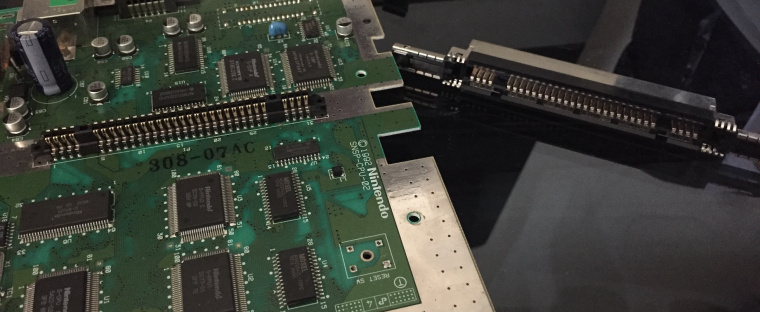
In my build I could solder wires directly to the underside of the cartridge slot but that doesn't go with my neat, tangle-less vision.
-
@obsidianspider said in Pi in a Super Famicom Build:
Unfortunately, the attempt to desolder the game cartridge slot from the board with a heat gun was a failure. I melted some of the plastic and it just plain didn't work. I ended up prying the metal housing (which had black marks on it when I got the Super Famicom) free from the board, and then desoldered each pin individually from the board, then reassembled the socket.
That sounds like a lot of work. I used a dremel to chip away bits of the circuit board to isolate the pins for my usb stick in cart setup.
-
Hey guys, first post here. Super impressed by all the projects!
Im also doing a Snes build with my new Pi 3b.
(Built a bartop arcade last month, will be posting it in the forums as soon as I put on the new vinyl-art.)
Anywho, Im having a hard time googling the power button options. Iv read a lot about the powerblock way.
But is it in any way possible to attach the org powerbutton from the SNES directly to the Raspberry Gpio pins, to make a on/off solution? (I always "soft" shutdown through ES). If not, i might just use my Micro-usb cable with a rocker and sort of Macgyver it with glue to the Snes power button. Will be posting progress as soon I get the thing together.
Sorry for jacking thread. Pls delete if its against rules..
Thanks for your help, in advance / Mattias -
@jackal123uk I noticed quite a few board differences between Japan, American, and European boards. Over time even systems in the same region had board changes. Lucky you that the cartridge slot came right off.
-
Today's adventure in desoldering went much better than yesterday. I'm still by no means good at it, but I'm getting better.
I successfully removed all the components from the J.League Excite Stage '96 game that will be the donor for my secondary screen. This blog post by Gabriel Torres had a lot of good tips on desoldering, but the one that seemed to help the most was to add some solder to each pin before you try to remove it.
What I started with:
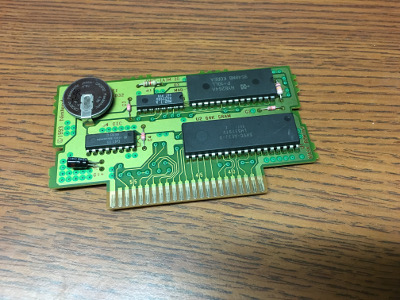
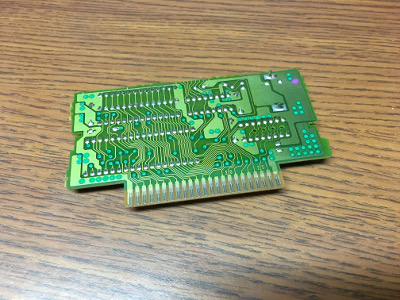
The end result. MUCH better than the hacked up mess I had yesterday.
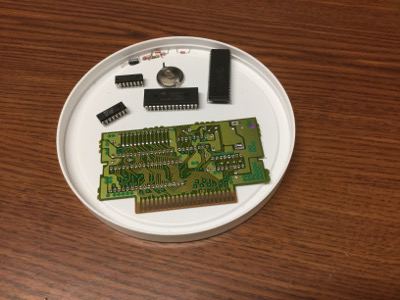
Since I was in a solder-y mood I decided to add JST jacks to my Reset button and Mausberry circuit.
I had to make small jumpers and hot glue the jack to the Reset button, but I think it turned out ok.
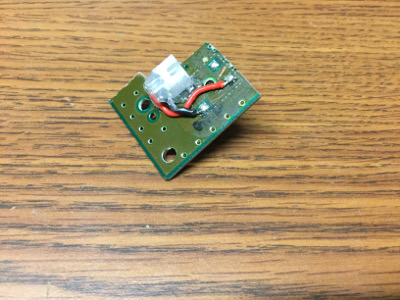
I want to try to keep things neat, so I put jacks on the bottom of the Mausberry for power and also for the GPIO. Ideally I'll be able to power the Super Famicom LED from the Raphnet USB adapter I ordered, so I don't mind blocking that with the socket.
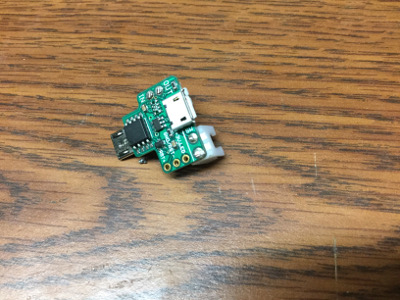
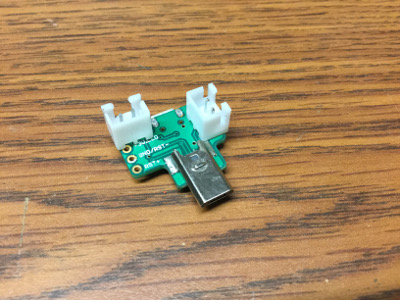
While I was working on things the standoffs I ordered came in the mail so I was able to attach those to the bottom of the case. It's probably too much hot glue, but I don't want anything moving.

After putting the Pi in its final location I determined that I definitely won't be able to use the eject mechanism, but I'm ok with that. All in all, it was a good day.
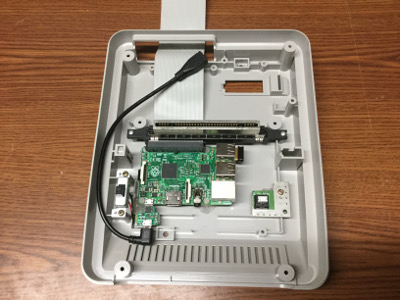
-
My Raphnet BRD-4NES4SNES adapter arrived and wow, this thing is tiny. The dimensions were listed on the website when I bought it, but seeing it in person makes me wonder how I'm going to mount it, and I really hope I don't mess anything up when soldering.
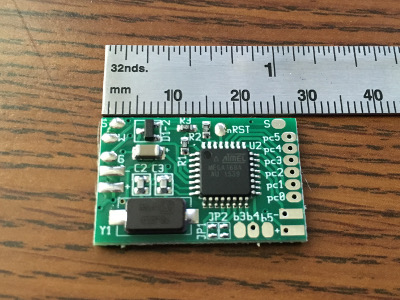
-
@obsidianspider remember to wire up your player 1 controller port for a multitap as well (yes on the 4nes4snes you have to put it on player 1)
-
@edmaul69 How did you do that? I've never owned or used a multitap.
Based on the diagrams from Raphnet, it looks like Pin P3 is for Player 1 data and Pin P2 is for Player 2 data.
For multitap wiring it shows that Pin P3 is player 1/2 data and Pin P2 is for Player 3/4 data.
Did you just wire up the
SelectandDATA (Controllers 3 and 4)pins for the Player 1 controller in addition to the "normal" wiring? Essentially just two extra wires.
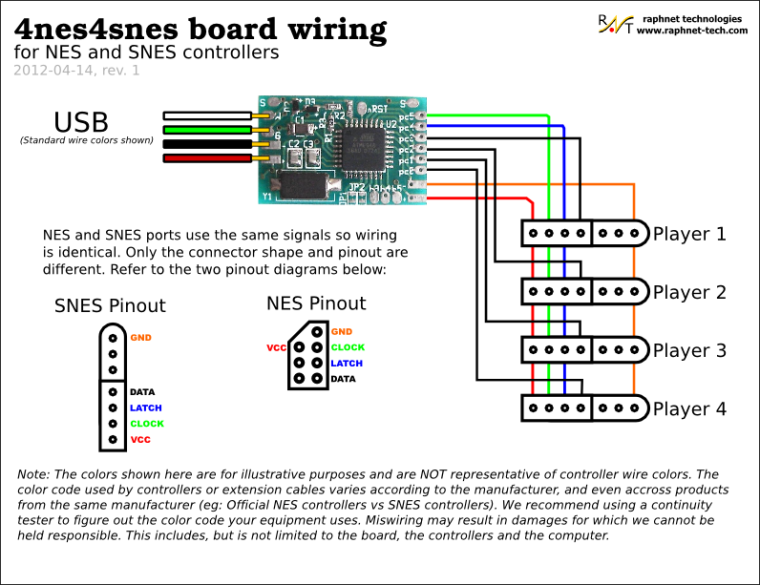
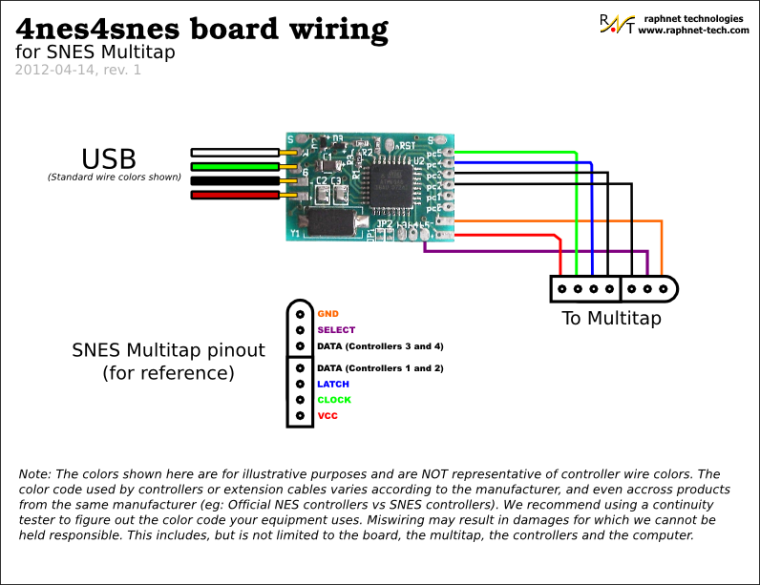
-
@obsidianspider just wire up the first two players wires how they are described. The multitap uses the other two unused pins. One of them shares a wire with player two. The other goes to its own solder pad on the chip. Having that wired up if you ever want to play more than two players you can. There are a lot of multitap games for the super nintendo and several for the nes.
-
I'm still a bit intimidated by the Raphnet adapter, so last night I decided to figure out the pins on the game cartridge board and solder on a ribbon cable. I also removed the pins from my TFT and attached a cable. To keep things easier to take apart in the event of the screen breaking I added JST connectors between them.
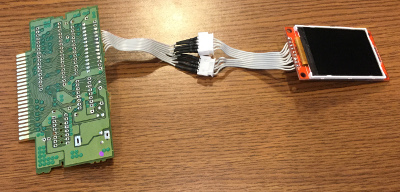
I then translated the GPIO pins to cartridge slot pins and soldered the ribbon cable on to each pin individually. I didn't attempt to solder to the pins while they were in the connector, I just pulled them out and then put them back in when I was done. When I went to test things out the screen was going crazy and I am pretty sure it was because when I smooshed the wires down when I screwed in the connector that some pins were touching. To keep things from shorting out I desoldered all the pins and then reattached them and used shrink wrap on the ends.
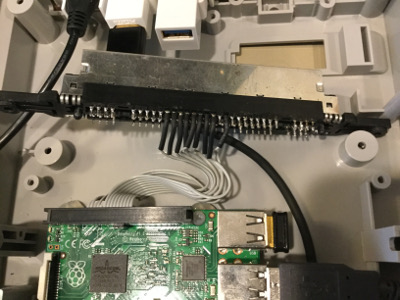
With the screen working in the cartridge slot I decided to connect the Mausberry to GPIO and the power switch to try it out. Things didn't go well. My bright idea of using JST connectors to make the switch easy to swap out if something breaks was a problem because the cables were pinched and broke off. I decided to just solder the Mausberry to the power switch and to the GPIO ribbon cable. Now everything is working correctly with the Mausberry.
I'm still unsure about cutting the cartridge for the screen, because it will depend on the label art I come up with, so for now I have it mocked up.
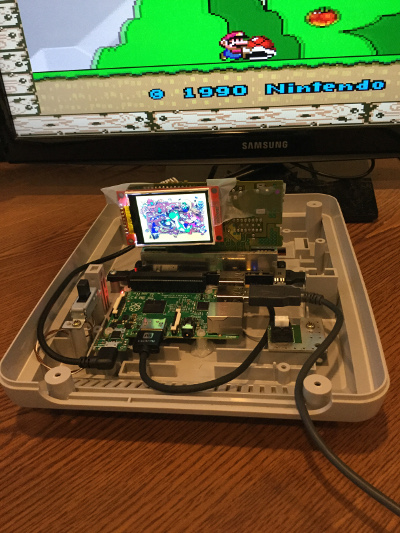
My mockup with a 3-port keystone jack plate showed it'll work.
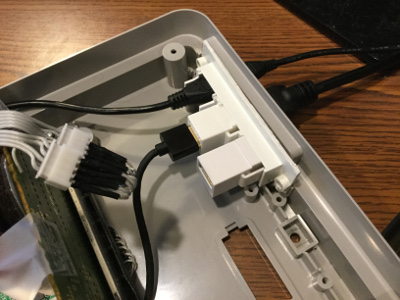
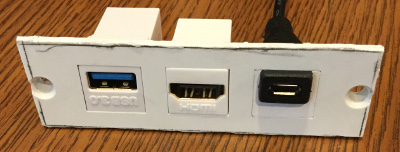
I wanted to try to use keystone jacks because they're a standard size, and there are all sorts of connectors, so I got one for HDMI and another for USB (in case I need to plug in a keyboard). No one makes a Micro USB keystone jack, so I notched a keystone jack blank and notched the right angle cable I'm using inside the case and it works well. No glue required.
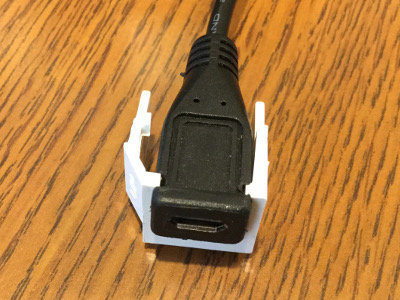
A friend of mine has a 3D printer, so we're going to work on making a power plate with provisions for keystone jacks this weekend.
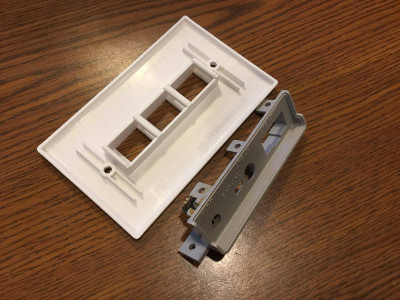
-
@obsidianspider I love your idea of using Keystone plates and jacks! We use Panduit plates/jacks at my work but Keystone is typically less expensive. Bummer that your JST connector didn't work out but sounds like you got it working without it!
-
I decided to make a quick "Powering Off" screen that displays on the cartridge screen when you shut off the Mausberry.
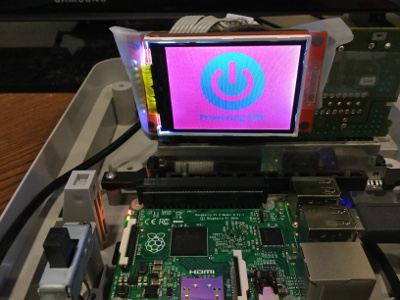
I don't know that I've ever had this much fun playing with a power switch.
-
@backstander said in Pi in a Super Famicom Build:
I love your idea of using Keystone plates and jacks!
I really just hate the loads of glue and wires all over the place that I've seen in a lot of builds and I wanted to try to find a way to do it as cleanly as I could.
Bummer that your JST connector didn't work out but sounds like you got it working without it!
Yeah, the JST connectors pointed down and the cables were making a 180 degree bend. If I hand right angle JST connectors it would have worked, but I didn't see anyone that sold them, and really, how often am I going to be swapping out the switch? Even if I do have to, now that I'm getting better at soldering, it's a quick job.
-
@obsidianspider your build is coming along nicely. I've been getting inspiration seeing how you've done things to tweak my own sfc build I'm doing.
Keep the post coming.
-
Hey, good work on the build its looking awesome. I'm going to put a pi in a SNES aswell, I have almost everything I need. Just a question, I got the SNES in but I can't open it, how did you open it? there are these little star-circle screws on it and I have no tool to open them? You are using a super famicon and I'm using an EU super nintendo so maybe they're different? thanks
-
@lorc34 those are "security screws", you can get them in a set of bits at a hardware store. But the snes ones are in a unusual size. I melted a bic-pen with lighter and made a temporary molded screwdriver. There are instructions on YouTube.
-
@lorc34 said in Pi in a Super Famicom Build:
Hey, good work on the build its looking awesome.
Thanks! I'm learning a lot and have had to re-do a few things as I mess them up, but it's coming along.
I'm going to put a pi in a SNES aswell, I have almost everything I need. Just a question, I got the SNES in but I can't open it, how did you open it? there are these little star-circle screws on it and I have no tool to open them? You are using a super famicon and I'm using an EU super nintendo so maybe they're different? thanks
You'll need what's called a "Gamebit" screwdriver. I got a two-pack from Amazon (not an affiliate link).
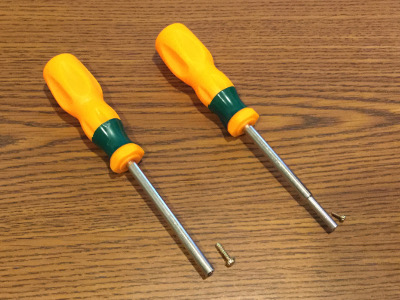
4.5mm for the SNES
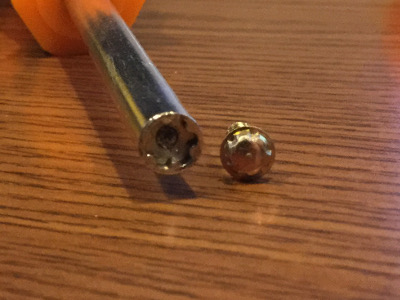
3.8mm if you want to open any games.
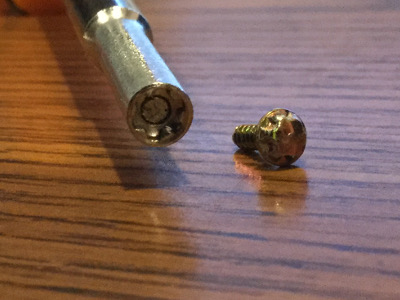
-
@Dipkid said in Pi in a Super Famicom Build:
@lorc34 those are "security screws", you can get them in a set of bits at a hardware store. But the snes ones are in a unusual size. I melted a bic-pen with lighter and made a temporary molded screwdriver. There are instructions on YouTube.
The problem with the bits at the hardware store is that they're usually too big of a diameter to fit down the hole in the SNES/SFC. I like tools, so $12 for two screwdrivers wasn't too bad for me.
Contributions to the project are always appreciated, so if you would like to support us with a donation you can do so here.
Hosting provided by Mythic-Beasts. See the Hosting Information page for more information.